Reflecting on Weil’s notion of decreation, Anne Carson unwittingly offers some advice to the viewer of Tiziana La Melia’s solo exhibition at the Gallerie Anne Barrault: beware the impulse to taste the pictures, as the will to consume them may actually be a refusal of the contradiction they reveal. Carson writes,
I remember a little book of The Lives of the Saints that was given to me about age five. In this book the various flowers composing the crowns of the martyrs were so lusciously rendered in words and paint that I had to be restrained from eating the pages. It is interesting to speculate what taste I was expecting from those pages. But maybe the impulse to eat pages isn’t about taste. Maybe it’s about being placed at the crossing-point of a contradiction, which is a painful place to be and children in their natural wisdom will not consent to stay there, but mystics love it. (1)
The story of Saint Agatha, for example, is both painful and sordid. She was condemned to die at the stake for obstinately maintaining her Christian vow of chastity in spite of the advances of a Roman prefect named Quintianus. The earth refused this injustice and shook in rage. In the chaotic aftermath of the quake, Saint Agatha was sent to prison and is thought to have died there in the year 251. Before her death, in effort to convince her to renounce Christianity and accept Quintianus as her lover, she was repeatedly raped, her body was drawn out on the torturers rack, and her breasts were cut away
from her body with pincers. On her feast day, the 5th of February, she appears iconographically as the parts of herself that were torn from her: small fruit cakes in the shape of pale breasts topped with a cherry.
As the patron saint of breast cancer patients, rape victims, and wet nurses, Saint Agatha is evoked to protect women from the violence she herself suffered, and by which she is also represented : people eat sugary replicas of excised breasts, frosted icing clinging to their fingers on cold February afternoons. Simon Weil might call the paradox of Saint Agatha’s feast day an occasion of decreation.
“We participate in the creation of the world by decreating ourselves,” she writes. (2)
In other words, decreation is the gradual removal of the self from the self, a process that the 7th century Greek poet Sappho describes as the progressive dysfunction of a person’s ability to sense the visual, aural and tactile registers of experience. Anne Carson writes that Sappho “shows us the objects of outer sense emptying themselves” to such a degree that the poet becomes capable of standing outside herself.(3)
I want to suggest to the viewer that they consider La Melia’s paintings in this vein: as objects of outer sense emptying themselves. the peas of a butterfly, for example, as bright fuchsia vaginal form vivid against a pair of paler pink ones, the ghost of a checkerboard grid in the background of its top left corner. Or Kind of murex, kind of marzipan, a dark green body contending with its own neon burst
of aura and Radula, a similar painting of grey form that appears to be seated on its own shadow, a shadow which is dripping. Each painting, and each in a different way, both asks to be eaten and renders a form that is undoing itself.
“Greener than the grass,” Sappho wrote, providing La Melia with the opening subtitle in the video at the visual center of the exhibition, with other fragments of language in the video drawn from La Melia’a accompanying text work, St. Agatha’s Stink Script. Sappho is referring to herself and to her own sense of having emptied herself so much that she out-colors the things of the natural world around her. Then Ada Smailbegovi?’s legs come into view, clothed in the same irreverent colors as the field of wildflowers in which she stands, playfully illustrating the possibility that we could forget ourselves so thoroughly as to become pinker than the flower buds.
Smailbegović is assistant professor of English at Brown University, but what really interests her is the structure of transformation across disciplines: “Science embraces the result of change, the most recent findings. A poet might embrace the process of change, the nature of development,” she writes.
As she handles a collection of eggshells, her hands swathed in pale mesh batting, she cradles some and places others on her open lap, giving the viewer a sense of their preciousness. Then she pulverizes the shells with a mortar against the flat stone of the garden patio. The viewer is reminded of the painful contradiction involved in all processes transformation: in order to become, it is necessary to experience loss.
Natasha Marie Llorens
Alger, April 2019
_____________
(1) Anne Carson, “Decreation: How Women Like Sappho, Marguerite Porete, and Simone Weil Tell God,” Common Knowledge,Volume 8, Issue 1, Winter 2002, p. 199.
(2) Simon Weil quoted in Carson, “Decreation,” 196.
(3) Carson, “Decreation,” 190.



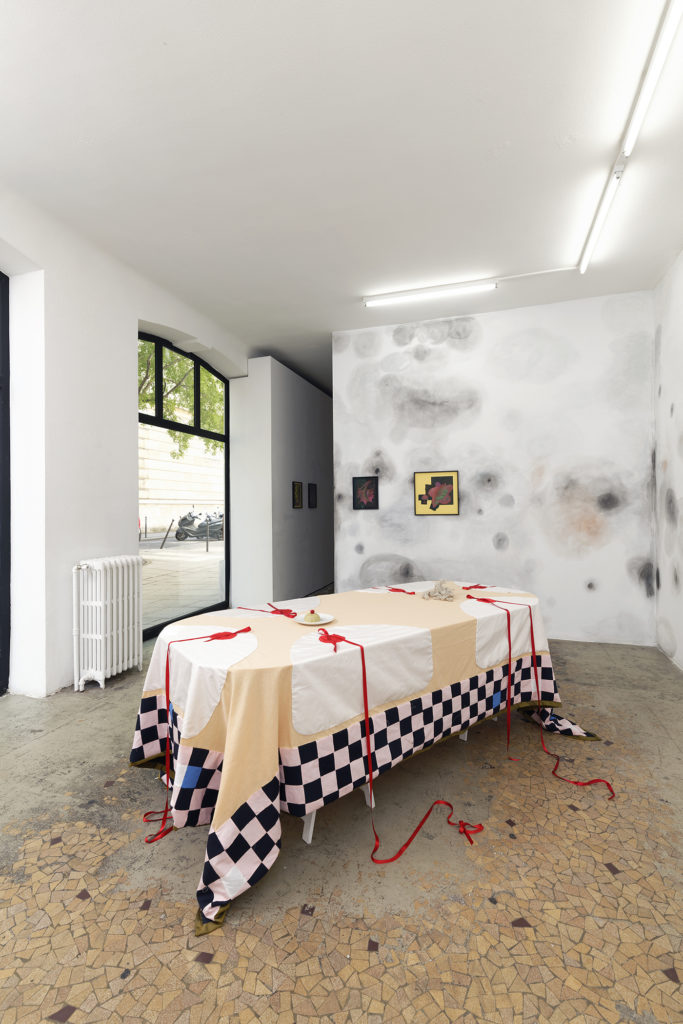
Table cloth for collective wool writing, 2019
hand quilted cloth with appliqued cotton, silk, polyester and ribbon. Interchangeable table top prompts like wool, tin, perfume.
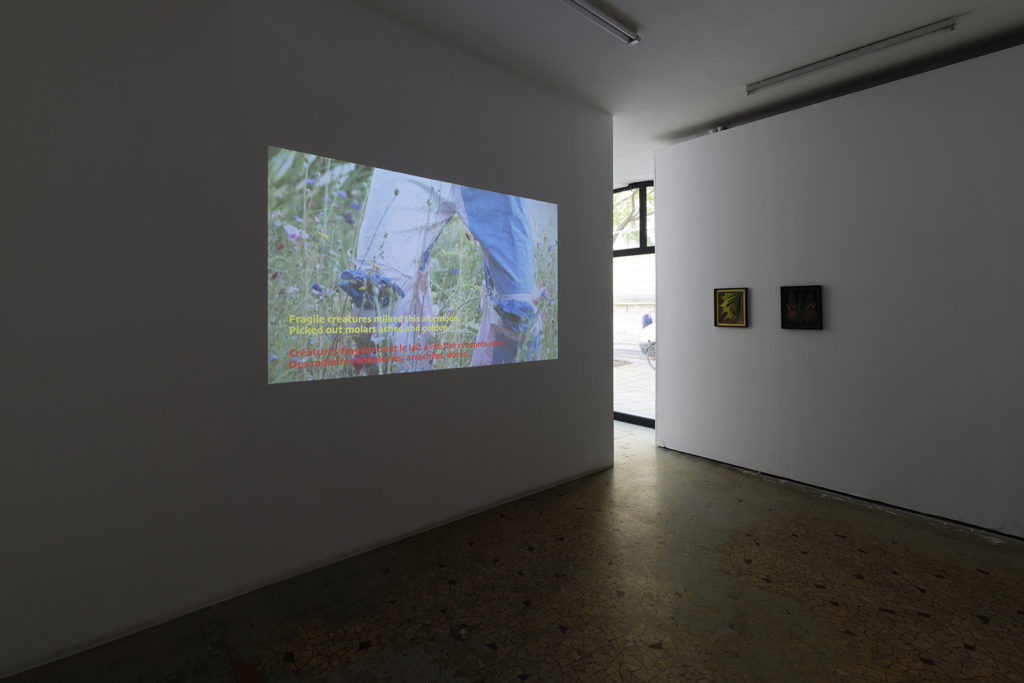
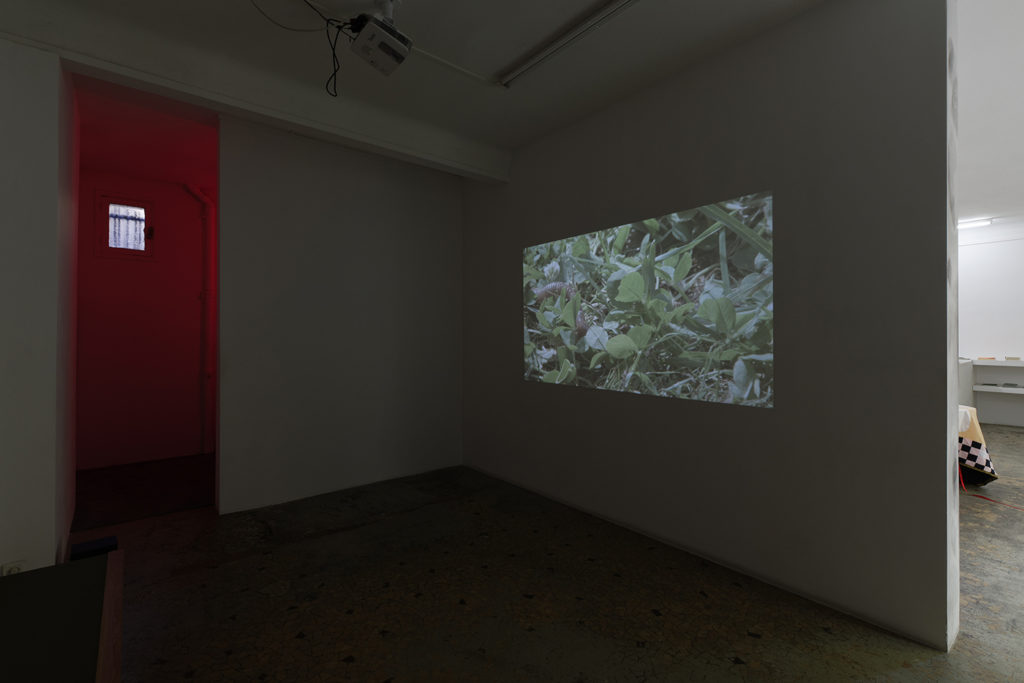
Decreation, 2017-2019
Digital video
Ed 1/3
7’27″
Credit Notes:
Featuring: Ada Smailbegovic and Emily Hill as mother
Text: Sections of poem borrowed from St. Agatha’s Stink Script poem adapted for video mixed with added narrative lines.
Translation: Vincent Bonin
Sound editor: Julian Hou
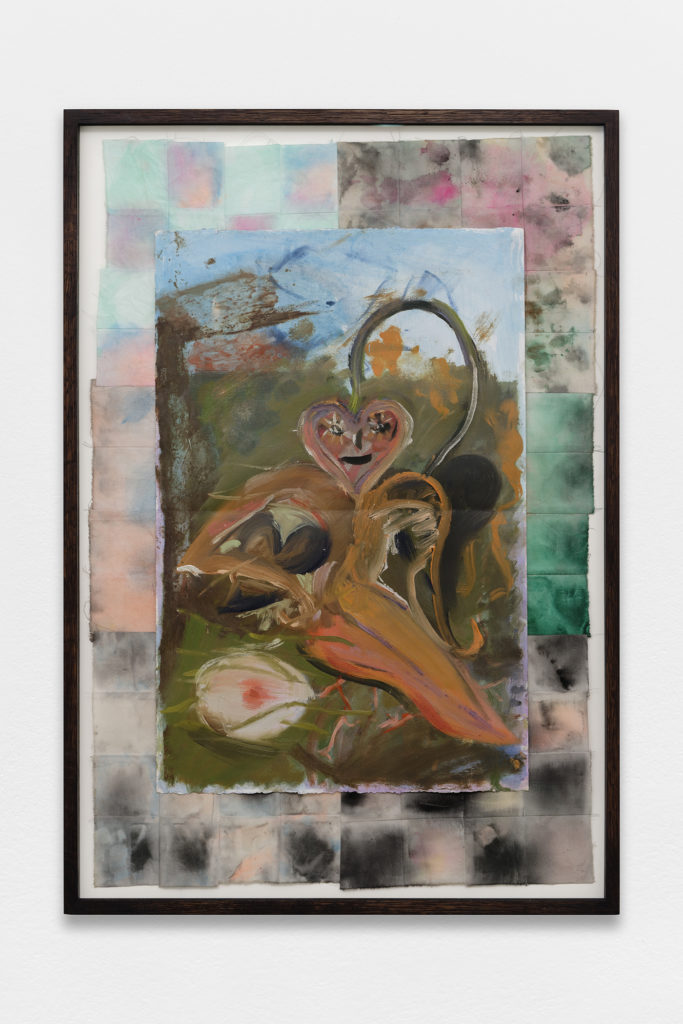
Tiziana la Melia
A-geo-ga, 2019
oil, watercolour and ink on paper, fabric backing is handpatched with ink and watercolour
75 x 51 cm
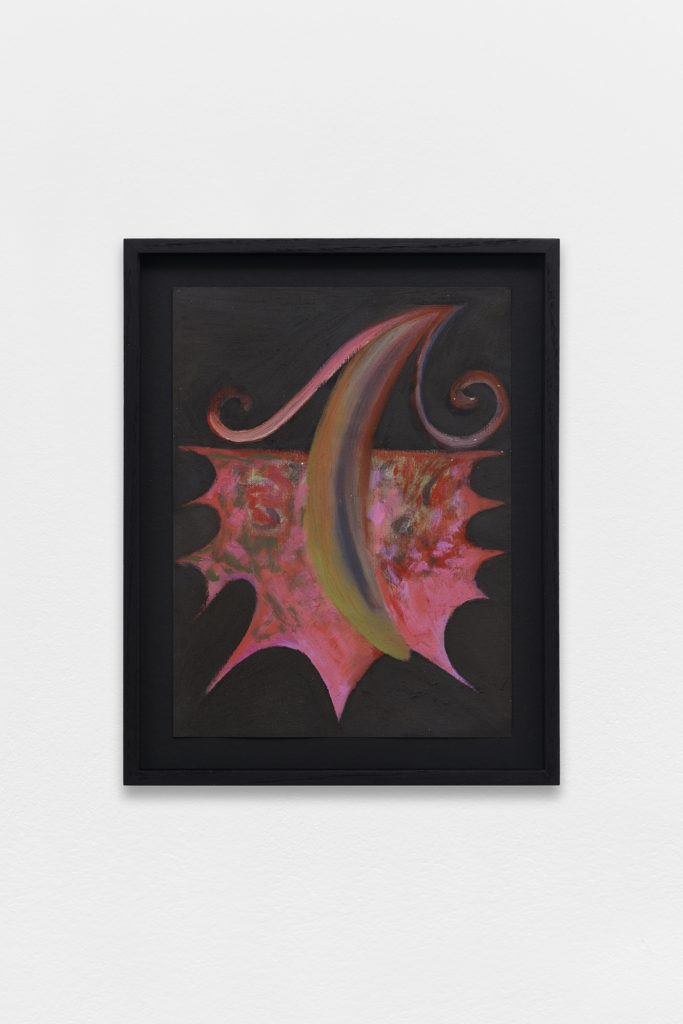
Tiziana la Melia
Underground Communicator, 2019
oil on paper
30 x 22 cm

Tiziana la Melia
the peas of a butterfly, 2019
oil on paper
37 x 36 cm
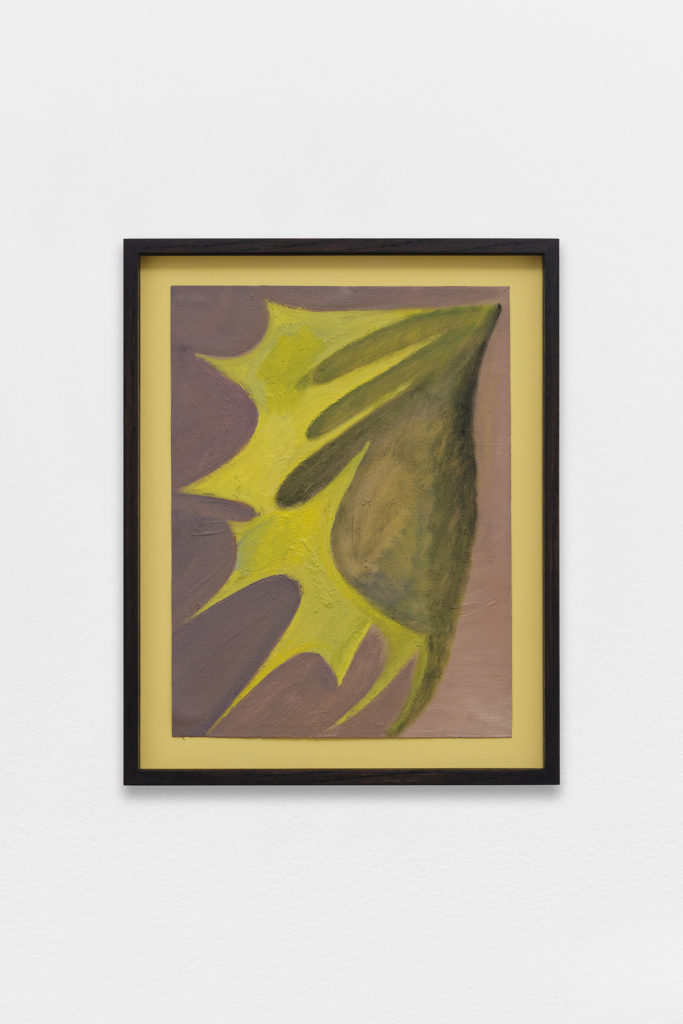
Tiziana la Melia
Kind of murex, kind of marzipan, 2019
oil on paper
30 x 22 cm
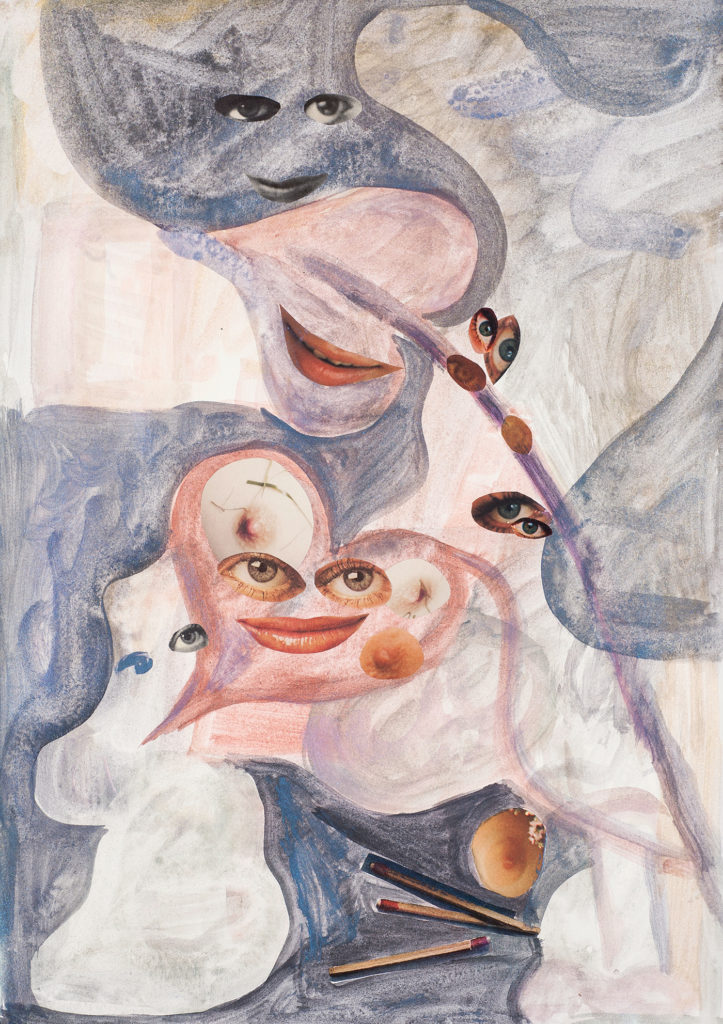
Tiziana la Melia
Fragments de Blooms, 2018
aquarelle nacrée sur papier avec collage de page de magazine Playboy (juillet 1981)
42 x 30 cm
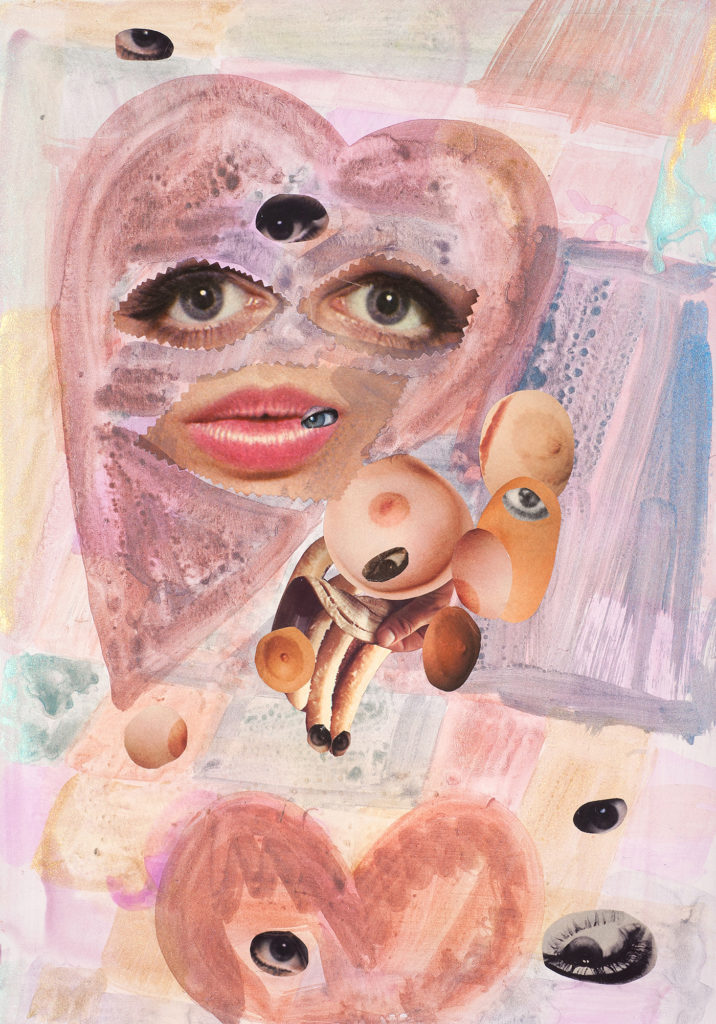
Tiziana la Melia
Journey Evers, 2019
crayon de couleur, aquarelle nacrée sur papier, collage découpé de page de magazine Playboy (avril 1979)
42 x 30 cm
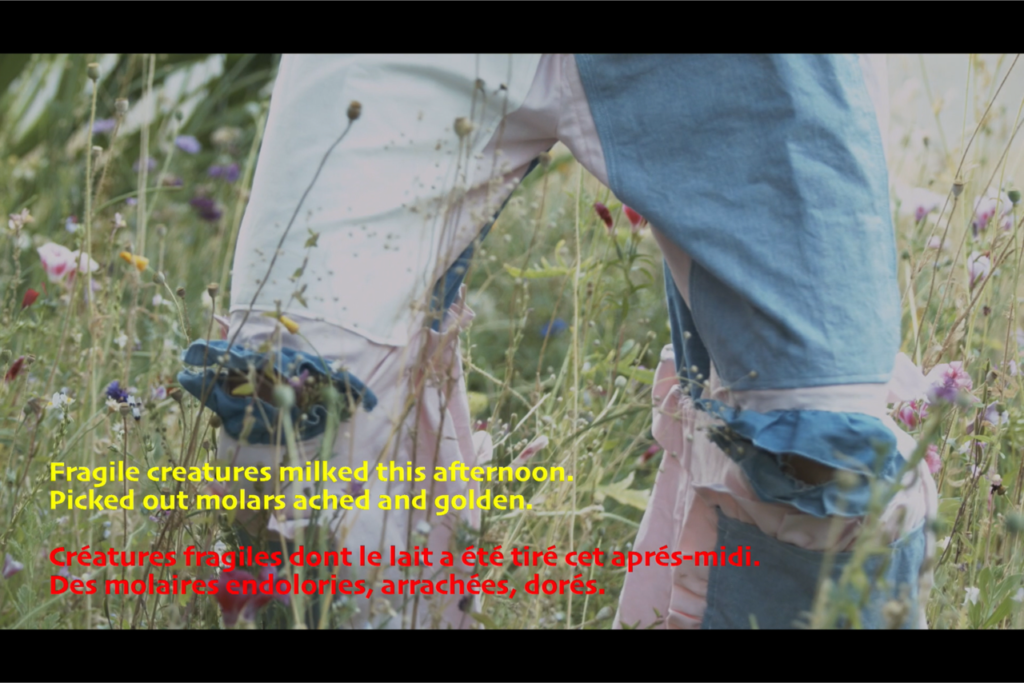
Decreation, 2017-2019
Digital video
Ed 1/3
7’27″
Credit Notes:
Featuring: Ada Smailbegovic and Emily Hill as mother
Text: Sections of poem borrowed from St. Agatha’s Stink Script poem adapted for video mixed with added narrative lines.
Translation: Vincent Bonin
Sound editor: Julian Hou
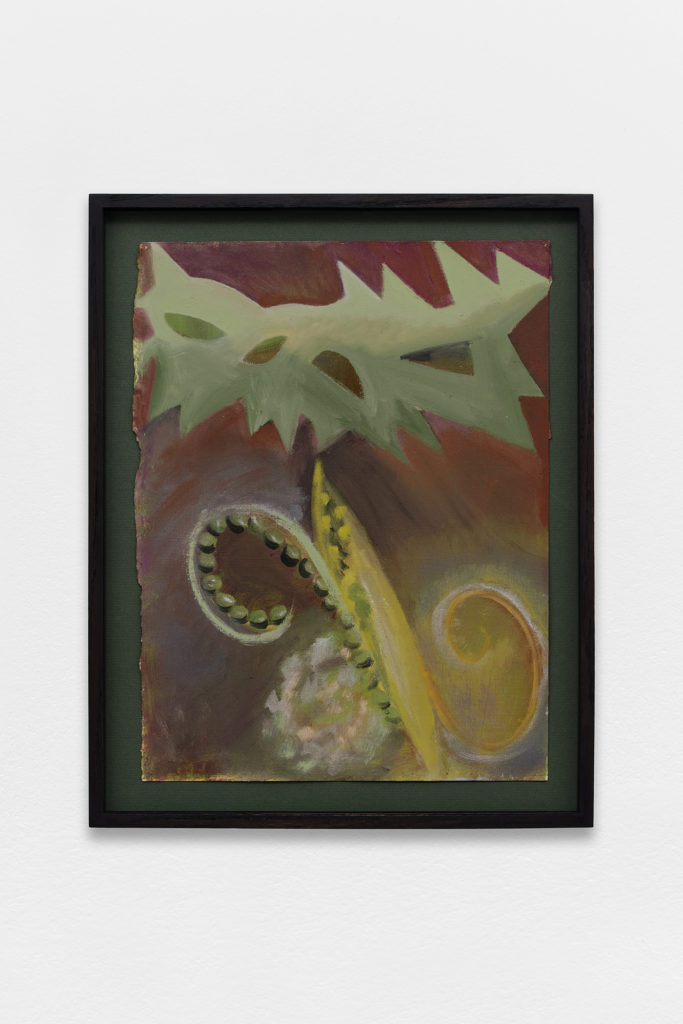
Tiziana la Melia
The language of Husks, 2019
oil on paper
37 x 28 cm
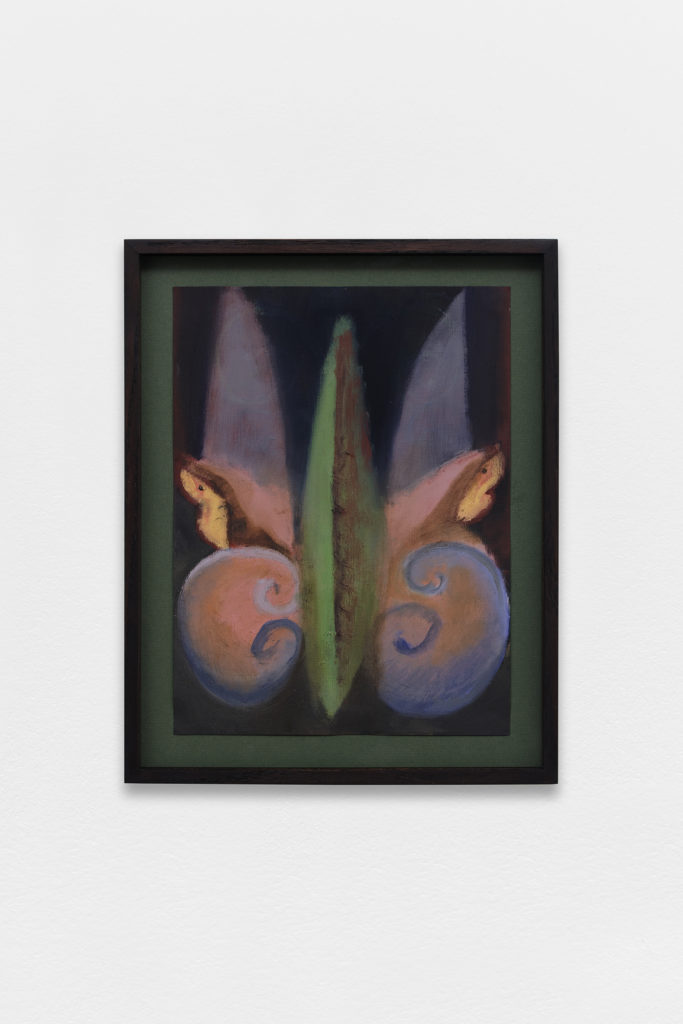
Tiziana la Melia
Radula, 2019
oil on paper
37 x 28 cm
to download : St.Agatha’s Stink Script by Tiziana la Melia
